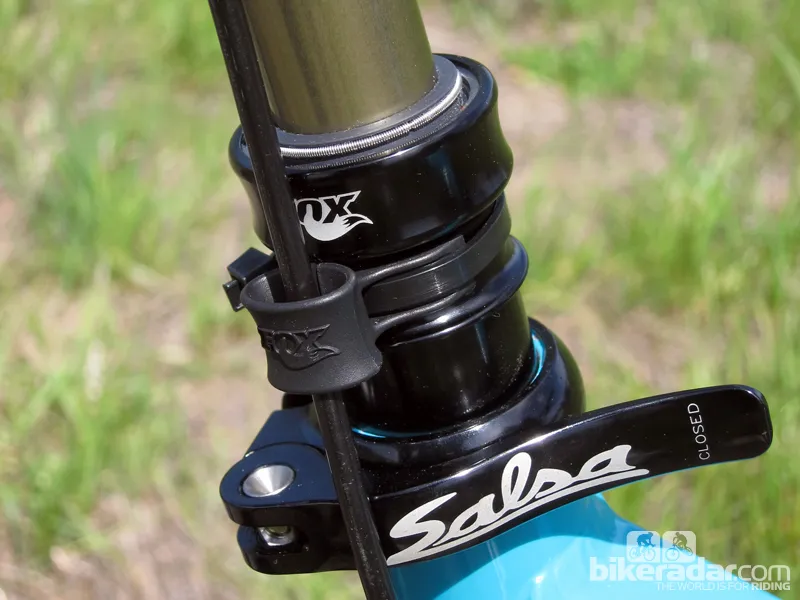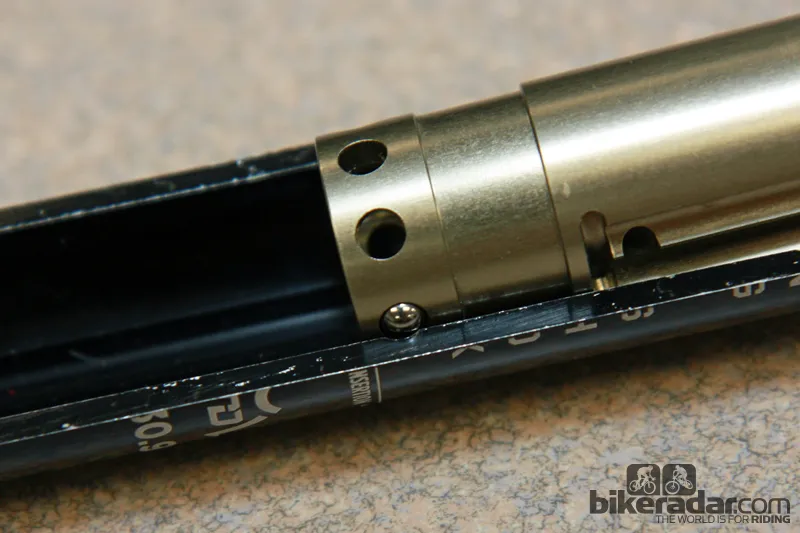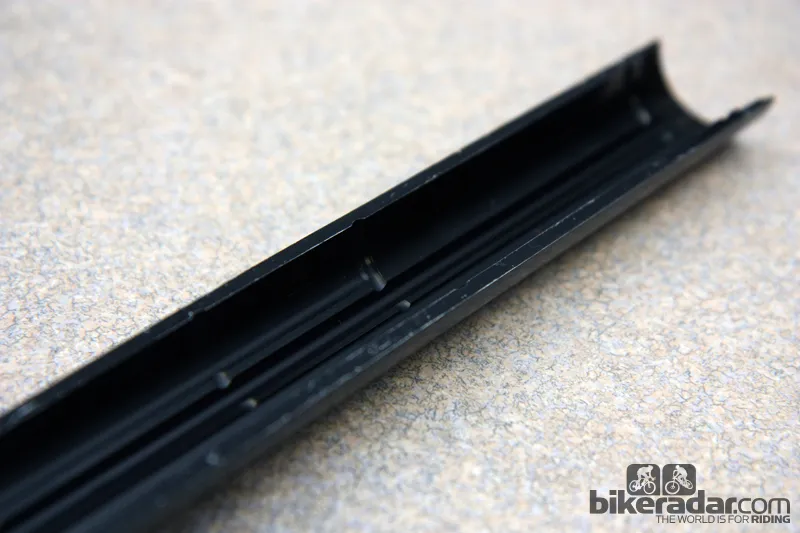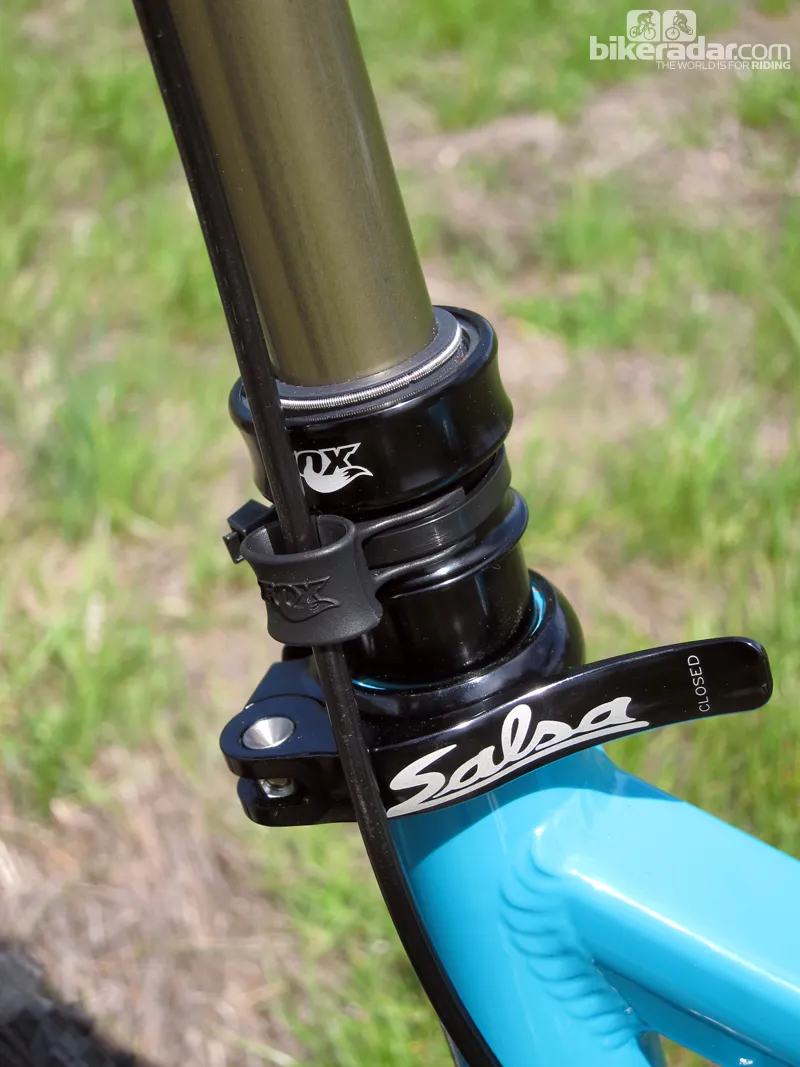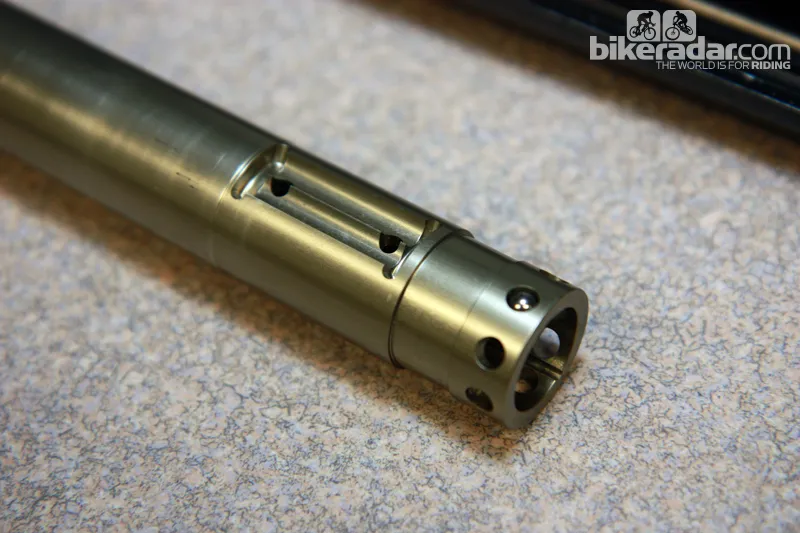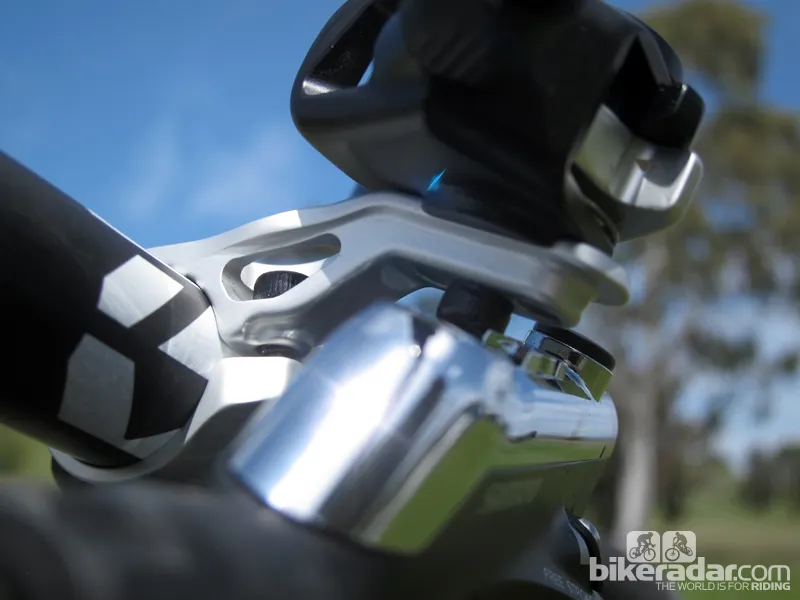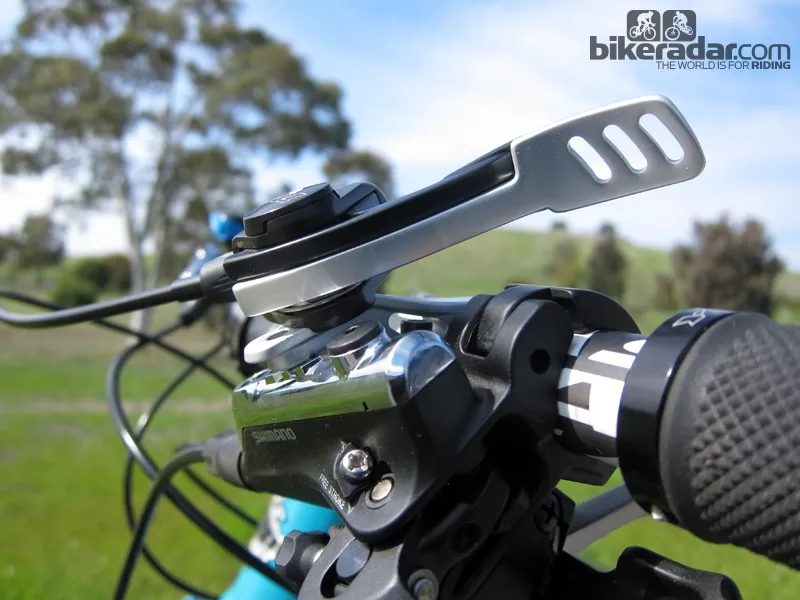After a long wait since the initial preview in 2010, Fox Racing Shox – or just 'Fox', as the company now prefer to be called – have released full details of their new DOSS dropper seatpost. The design is impressively clever and now that we've finally had a chance to ride it, we can say it's been worth the delay.
Smooth action, (mostly) slop-free
The most impressive features of the DOSS (Drop On Steep Stuff) seatpost are its wonderfully smooth operation and its remarkably slop-free structure. Other dropper post designs rely on either a tightly fitting set of keys to reduce unwanted play, thus slowing down the movement, or a more freely moving set of keys to speed up the action, thus yielding more slop. In contrast, DOSS's clever internal design uses a central sliding cam that wedges a pair of stainless steel keys into machined grooves.
Those keys are pushed outward only when the seatpost is locked in position. Otherwise, they're retracted slightly for a fantastically fluid and silky-smooth movement, leaving only a pair of bushings and the seal head on which the two pieces slide. Friction is much lower than our current favorite, the RockShox Reverb – even when that post is set to its fastest speed – and since there's so little resistance and no oil-filled mechanism, the system requires less air pressure and thus extends quickly but with a less violent force. Even better, it also self-adjusts for wear.
While there's essentially no play in either the intermediate or lowest positions, practical issues in regards to the manufacturing tolerances curiously leave some axial slop when the post is fully extended. It's mostly unnoticeable if you're just pedaling along in the saddle but it can felt – and heard – when making the transition between being seated and standing. We didn't find it to affect performance but all the same, it's a bit off-putting for such a high-end product.
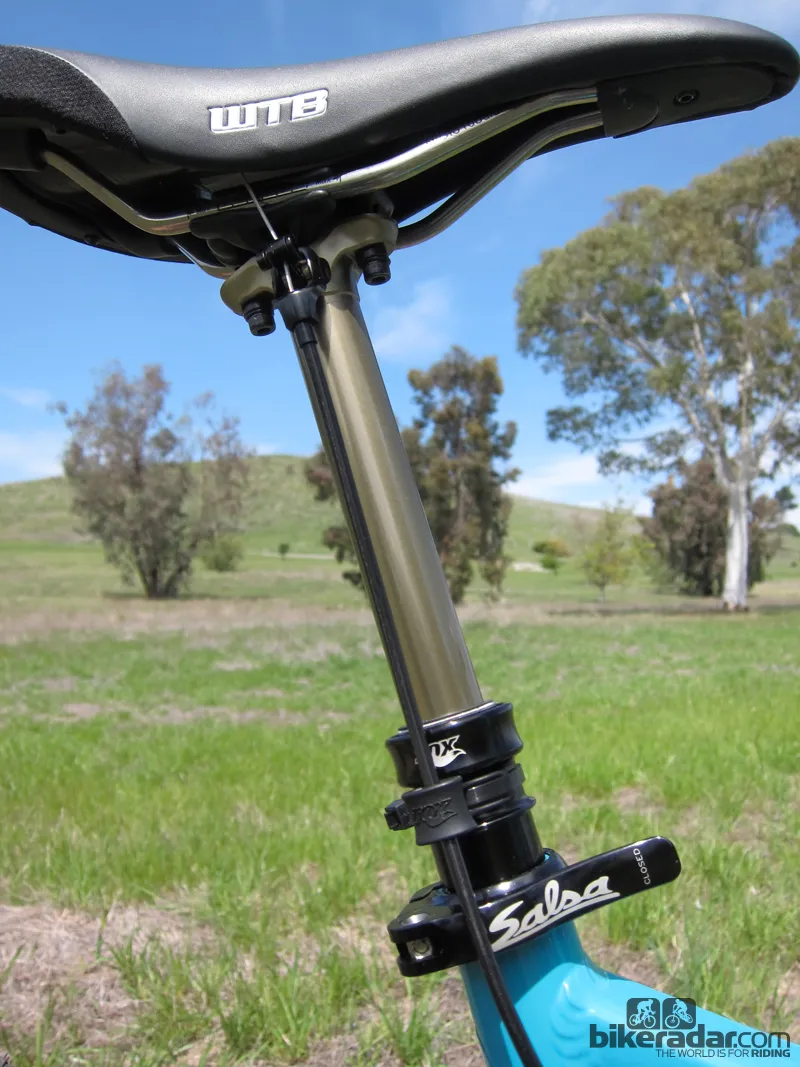
The new Fox DOSS dropper seatpost is fantastically smooth in operation and impressively slop free
Three positions: fully extended, fully dropped and just right
Fox will offer the DOSS with either a 102mm (4in) or 127mm (5in) drop. Both include a single intermediate position that lowers the saddle by 40mm when cruising fast, technical terrain that still requires some pedaling. In practice, it feels pretty much spot-on, dropping the saddle just enough to allow for more maneuverability but still leaving it high enough for reasonable pedaling efficiency.
Moreover, it locks in position and is virtually foolproof in operation – simply press the dedicated remote lever and let your weight drop the saddle. The timing of the lever push isn't that critical as you can either release the lever once the seatpost stanchion hits the hard stop or just after the motion has started and the DOSS will lock itself into position automatically. Pulling up on the saddle won't cause it to extend like on the old CrankBrothers Joplin, either, and in event of a cable failure, you can still manually actuate the post to get you home.
The key to all of this is the DOSS's clever internal design. Like Specialized's Command Post, the DOSS is a fully mechanical system with internal grooves milled into the inner wall of the lower tube. While Specialized use a spring-loaded collet system with nearly full 360° contact between the locking mechanism and the tube, though, Fox use eight steel ball bearings that accomplish the same effect.
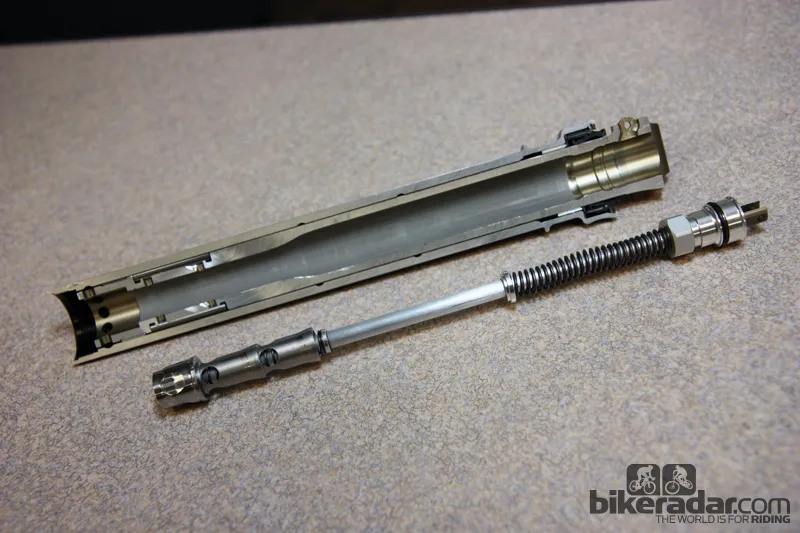
A cutaway of the new Fox DOSS post showing the spring loaded cam rod and the three cams down at bottom left
For the intermediate position, the sliding central cam rod releases the outward tension on just four of the bearings, leaving the remainder to freely slide down four additional longitudinal channels until they snap into the first circumferential groove. For the full drop position, all eight bearings are retracted, pulling the intermediate bearings inward away from those channels and allowing the inner stanchion to slide all the way down.
Fantastic post hampered by a so-so remote
Unfortunately, we wish the DOSS's remote lever was as keenly executed as its internal design. The main issue is its questionable ergonomics. DOSS relies on a two-lever system: push the inner, black lever for the intermediate position; push the main, silver lever for the full-drop position or to re-extend the post. It sounds simple in theory but when paired with trigger shifters, the remote lever's position well atop the bar is awkward to use – especially if you're already getting bounced around – and we couldn't find a natural feeling placement despite the three mounting holes.
In addition, hitting the inner lever requires you to reach your thumb even further inboard, which forces you to temporarily compromise your grip. We'd have preferred Fox offset the two levers height-wise instead, though even then it would still be a bit confusing with so many levers cluttering up the bars.
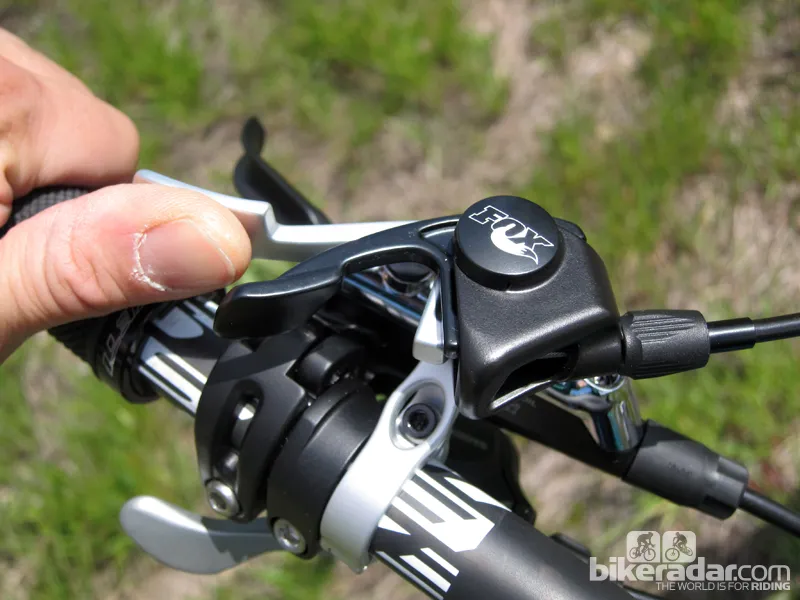
Unfortunately, the bulky DOSS remote lever doesn't feel as well executed as the seatpost itself
This ain't no vaporware
Fox may have made the public wait a long time for their dropper seatpost but production units in 30.9mm and 31.6mm diameters will supposedly arrive in stores beginning in May so you can decide for yourself if you agree with our initial impressions. Claimed weight is a bit heavier than the Reverb at 620g (including the remote and cable) and suggested retail price is higher as well at $439/£349. We'll secure a proper test unit in the coming weeks so expect a longer-term review, with a score, on BikeRadar later this summer.
